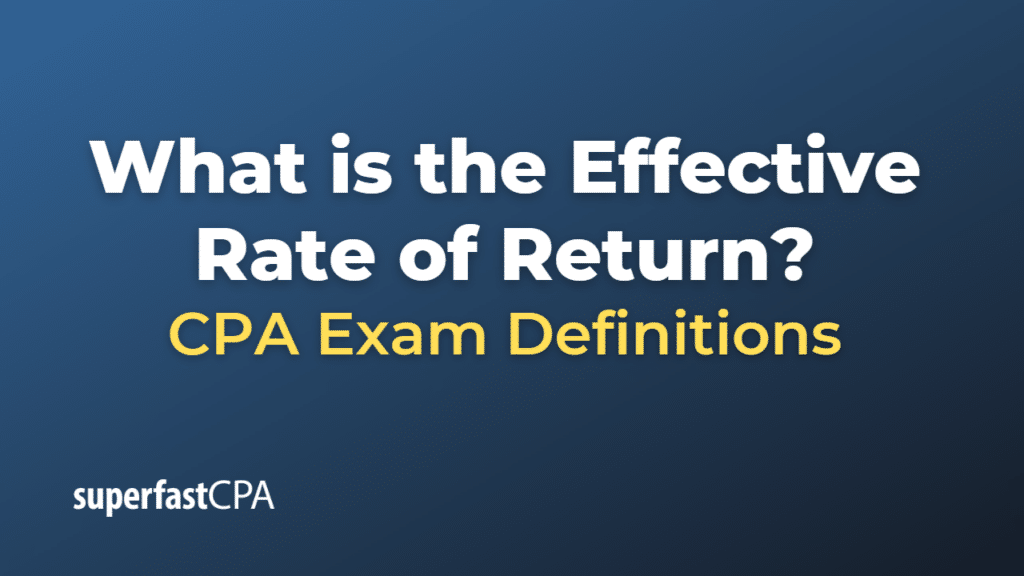Effective Rate of Return
The effective rate of return is a measure that accurately calculates the actual amount of return gained on an investment, taking into account the effects of compounding over a certain period. It’s also known as the annual equivalent rate (AER) or annual percentage yield (APY).
This differs from the nominal or stated rate of return, which does not take into account the effects of compounding.
The concept is similar to the effective interest rate, but it’s applied to investments instead of loans.
When an investment compounds, you earn interest not only on the original amount invested but also on the interest already earned. The more frequently compounding occurs (annually, semi-annually, quarterly, monthly, daily), the higher the effective rate of return will be.
The formula for calculating the effective rate of return is:
\(\text{Effective Rate of Return} = \left(1 + \frac{i}{n}\right)^{nt} – 1 \)
Where:
- i = the nominal rate of return (expressed as a decimal)
- n = the number of compounding periods per year
- t = the time the money is invested for, in years
So, the effective rate of return gives you a better idea of the actual return on an investment, taking into account the frequency of compounding.
Example of the Effective Rate of Return
Let’s go through an example to understand the calculation of the effective rate of return.
Let’s say you make an investment that has a stated or nominal annual interest rate of 5%. However, the interest is compounded quarterly. You want to calculate the effective annual rate to understand the actual return on your investment.
Here are the parameters:
- i = nominal rate of return = 5% = 0.05 (expressed as a decimal)
- n = number of compounding periods per year = 4 (since the interest is compounded quarterly)
- t = time the money is invested for = 1 year (we’re calculating the annual rate)
Now we substitute these values into the formula:
\(\text{Effective Rate of Return} = \left(1 + \frac{i}{n}\right)^{nt} – 1 \)
\(= \left(1 + \frac{0.05}{4}\right)^{4*1} – 1 \)
\(= \left(1.0125\right)^{4} – 1 \)
\(= 1.05095 – 1 \)
\(= \text{0.05095 or 5.095%} \)
So, the effective annual rate of return for this investment is approximately 5.095%, which is slightly higher than the nominal rate of 5% due to the quarterly compounding. This means that you’re effectively earning about 5.095% on your investment when the compounding effect is taken into account.













